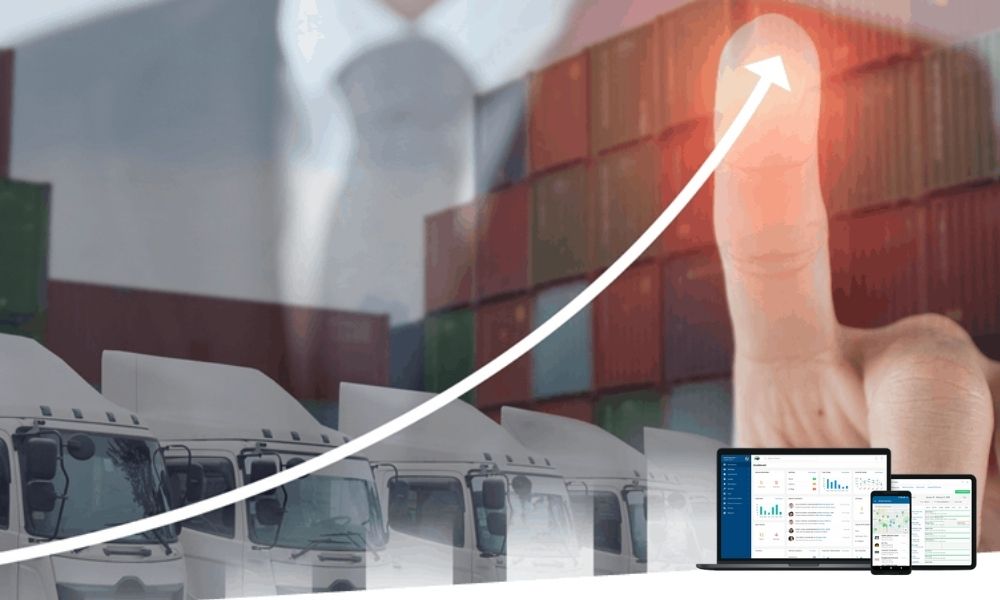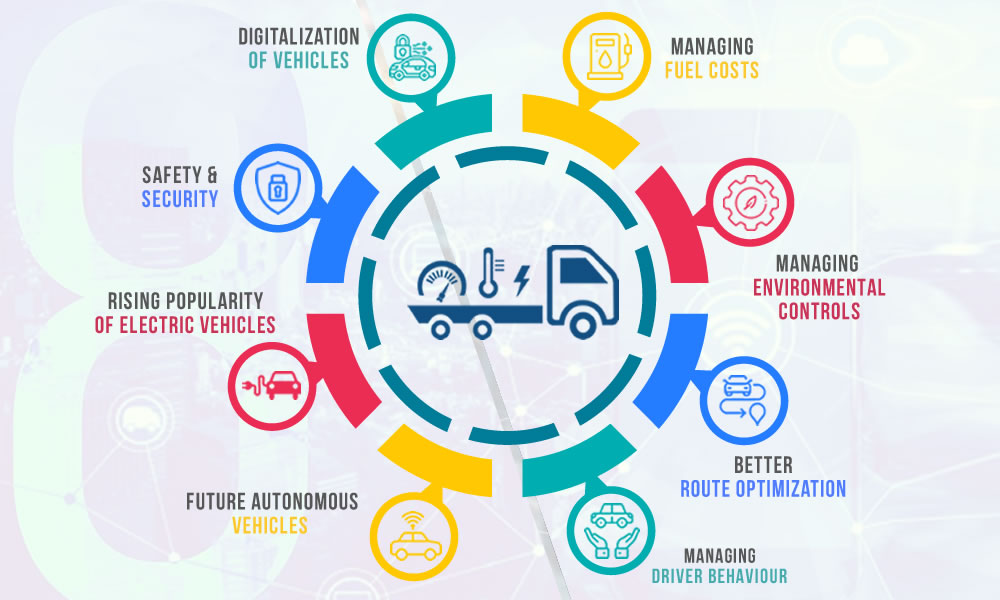Fleet Managers have the tough job of handling staff and vehicles on a daily basis. To make their job easier, fleet managers and operators now take the help of fleet management software with a supporting mobile app as solution to efficiently manage fleets, operations and manpower.
The software solution allows your fleet managers to track their fleet assets, making them quite capable to handle all aspects of the operation from their desk or via the mobile app. The fleet tracking application empowers managers to manage and monitor fleets from anywhere in a continuous and interactive manner.
The Fleet Management System (FMS) uses the software solution with GPS enabled telematics devices,to help your managers track the fleet and provides a digital information, like odometer readings, notifications and diagnostic metrics, in real-time that helps managers to avoid downtime and other costs that affect productivity.
The best of fleet tracking apps are sure to offer the following features:
Data Sync with FMS
The web-based FMS solution usually pairs with the fleet management application used for mobile devices. The best solution actually synchronizes data on the computer with the mobile app that is downloadable on the assigned user’s mobile device.All kinds of important tracking information, like location data in real-time, should be available on the interface. The app actually is an a bridged version of the web-based software for fleet management system.
Communicating in Real time
An ideal FMS solution will keep fleet managers informed about locations and facilitate real-time communication between the office and field staff. The right application will also help you to configure criteria for notifications, initiate workflows, prioritize and address issues. Real-time location updates are also helpful for fuel consumption and security.
Geo-fencing Feature
The Geo-fencing feature available in the GPS enabled software application can be very useful for tracking and controlling fleet vehicles. This feature in fleet management helps you demarcate specific geographical areas where vehicles and fleet are allowed to travel within this area with a virtual fence on an interactive digital map. This feature pairs well with a fleet tracking app to maintain better control of the fleet’s operations.
Ease of Use
Fleet managers are always on the lookout for technology that is easy to implement and use across the company. The fleet tracking app should be easy to use by anyone, being loaded with straight forward and intuitive menu to navigate and update.
Easy to Add On Users
Fleet managers and operators aim for growth, besides handling a fleet of vehicles, team of drivers and other supporting staff. The FMS software should be cost effective to add on any number of users to its platform. This feature would be of great advantage to your business and various stakeholders involved in the processes. See that the same applies to the supporting mobile app in the pricing model you were offered.
Setting Access Levels
Allowing unlimited users also brings in the factors of access levels and restrictions for users. You should be able to set access levels as per requirement of fleet managers and administrators. The application will help you set particular restrictions at various levels for specific users, like drivers or technicians. The user should be able to update information and access features related to their daily functions and communication needs.
User experience is enhanced when the FMS (Fleet Management System) application is empowered with GPS tech, which will take care of many functions includes Route Planning & Mapping, selecting of vehicles, training of drivers and automating manual tasks.Sometimes smaller vehicles may be better suited than large vehicles for the job. You should be able to right-size your fleet to optimize operating costs.
To Conclude
An FMS software, like the one Trinetra Wireless offers, synchronized with the other systems are suitable for handling many tasks economically.However, certain problems have to be tackled, like traffic congestion, accidents, extreme weather or global pandemics which are sure to impact your business or service adversely. It here the role of the fleet tracking app becomes critical,
In the near future businesses may probably be using intelligent fleet management software that most likely will have AI integrated,along with telematics technology. Inbuilt Data Analytics will assimilate all information to make them more valuable, insightful and meaningful to fleet managers and owners.
So, go for the right FMS software which is scalable and has the ability to tackle operational inefficiencies, identify non-compliance and other irregularities or discrepancies. It helpsfleet managers and owners to address issues effectively and enables them to make strategic decisions to achieve better levels of operational efficiency and also profitability.
A ‘Demo’ can be arranged for interested persons/managers for better appraisal of our FMS software. Kindly contact our executive team who will respond to you as soon as possible.








